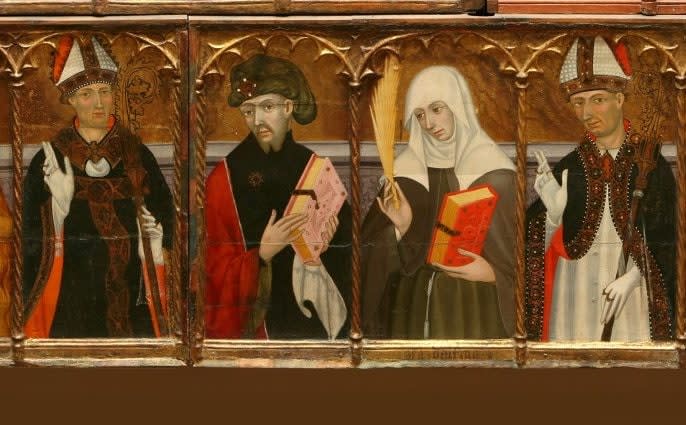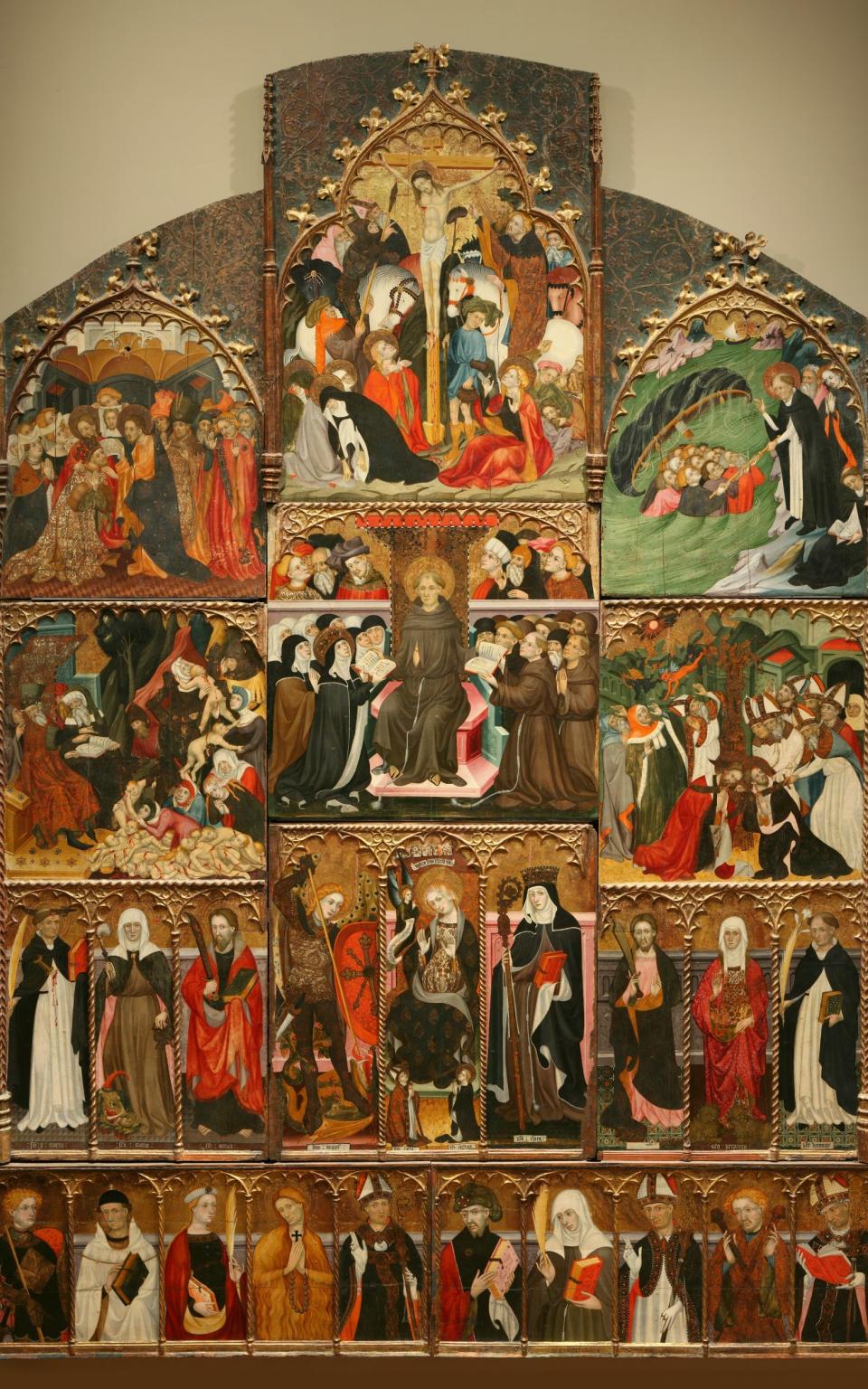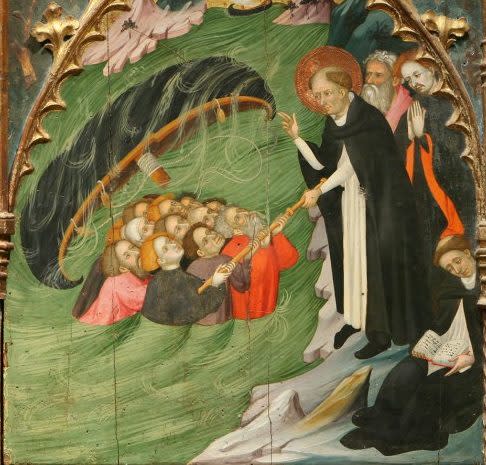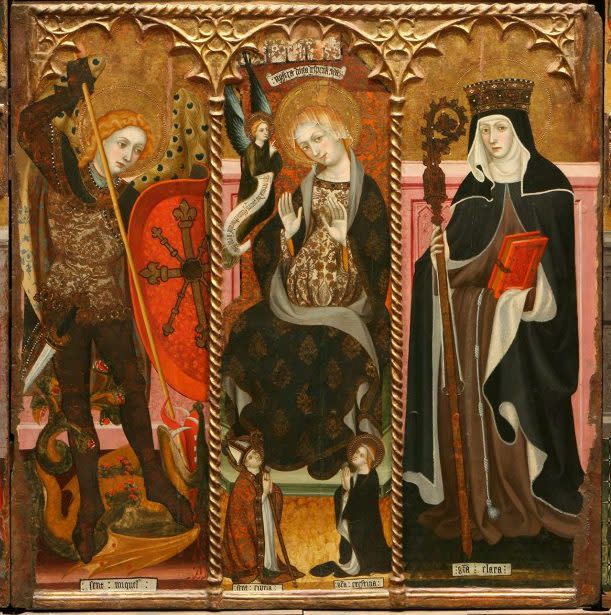Sacred Mysteries: Husband and wife in a four-storey painting

I became an enthusiast for the little cathedral city of Vic in Catalonia when I pottered around it a couple of weeks ago. It’s tempting to think oneself in touch with life there centuries ago. In reality what you see often has only the name of things that disappeared long ago.
In Vic, an old church called the Carme (in Catalan; Carmel in English) hasn’t been a Carmelite monastery since the Spanish dissolved their religious houses in a frenzy of liberal iconoclasm in 1836. The church is on a boulevard or rambla round the historic centre. No alleys run from it into the main square because along the rambla city walls once stood.
Where there used to be a gate in the walls, an old passageway (named, I’m glad to say, after St Christopher, or Cristòfol in Catalan) runs from the Plaça Mayor to the Plaça Santa Clara. But there is no sign of any church of Santa Clara. It was destroyed in the Civil War. The Banco Santander stands on the site, beside the horribly post-modernised remains of the Posada Colon.
Santa Clara was the convent founded in the High Middle Ages for Franciscan nuns that we call Poor Clares in English – Clarisses in Catalan. But the convent and its church had, long before they were burnt, been transferred to Dominican nuns, inspired by St Dominic. These commissioned a fine new sculpted Baroque altarpiece, destroyed with the church. But, in 1889 an outstanding painted wooden altarpiece made in the early 15th century had been saved when it came into the possession of Vic’s museum of medieval art, called by its initials the MEV.
I’m a bit unhappy about sacred objects becoming museum exhibits, but this museum fills with delight anyone who likes medieval art. It has bold Romanesque painted altar-frontals, dignified Catalan crucifixes, severe or homely painted Virgins, ironwork standard candle-holders, even a cabinet full of caltrops.

The old altarpiece from Santa Clara is astonishing. Four-storeys high, it is best seen from the adjoining stairs. It honours St Francis, but also his contemporary reformer, St Dominic.

Everything is painted as if taking place in 1415, when it was completed: the horsemen at the Crucifixion at the top; the Virgin Mary at the centre, flanked by St Clare and the Archangel Michael with shield and chased armour; mariners saved from a capsized ship; and, at the foot, 10 panels of saints like new portraits.

The painter, Lluis Borrassà, has been praised for his use of colour, the sense of movement of his figures and his underlying humanity. Two of the gallery of 10 saints are unfamiliar: St Elzéar of Sabran (1285-1323) and St Delphine (1284-1358), who were man and wife. In 1415, they were as recent as Churchill is to us. He wears a forked beard and floppy bag hat with a jewel at the front; she wears a snowy wimple and bears a palm of sanctity. Each holds a beautifully bound, clasped and gauffered book.
They were both born in castles, and, in the practice among the ruling classes, he was 10 when betrothed to her. They married three years later. But she had already taken a vow of chastity. He was very good about it. I think that, now we confront new kinds of sexuality every day, we must allow people from the past to choose abstinence. In any case, he was no wimp and led an army against the Emperor Henry VII, who had occupied Rome.
Elzéar died a decade later, but Delphine survived for 35 years as a widow, selling her possessions to benefit the poor. He and she now share the saint’s day of September 26. They had become members of the Third Order of St Francis, a devotional way of life for lay people. How much other laity were expected to imitate them, except in refusing to be worldly, grasping and angry, it is hard to say, but they fit well on this retable.

 Yahoo News
Yahoo News 
